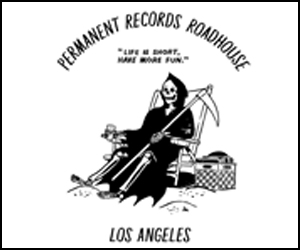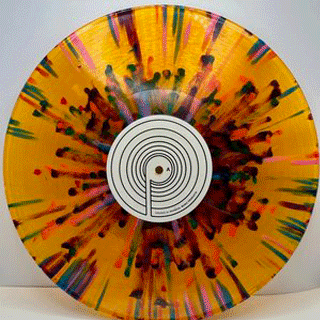Remembrance: Glen Campbell, by the rivers of my memory
Kevin Bronson on
0

Buzz Bands LA contributing writer Steve Hochman has been covering popular and unpopular music for more than 30 years. He reports for KPCC’s “Take Two” and San Francisco station KQED’s “The California Report” and has written for the Los Angeles Times, Rolling Stone, Billboard, Musician, Entertainment Weekly and AOL, among others. Here, he shares the story of the day in 2011 when he interviewed Glen Campbell, who died Tuesday at age 81.
• • •
Glen Campbell sits on the edge of a pool table in his Malibu home, a lot of activity buzzing around him, cameras and lights being reset in a break from filming interviews to be used for promotion of his upcoming “Ghost On the Canvas” album.
Someone in the room asks him about, “Uncle Boo,” the first song he ever learned to play back in his Arkansas childhood. Campbell strums the basic chord pattern, stops to tune up the low E string, goes back to strumming, then pauses for a second, seemingly lost in thought. Then he casts his gaze to the fretboard and sort of aimlessly starts noodling around and then … peels off a blistering run of jazz licks as if it’s nothing. He pauses, thinking a comment aimed at a lighting guy was meant for him, and then resumes, fashioning a set of complex chords. Again, nothing to it. See for yourself in the video below.
This is the most lucid, the most focused, the most clear-headed he is this day. It’s April 14, 2011, and it’s a month or so before the public will learn that he is suffering from Alzheimer’s disease via an announcement in conjunction with the album release and related tour plans. I’d been told, though.
I’d been hired to do the interviews with him this day, to get him to talk about the movingly personal album, essentially a look at his life told through songs that producer Julian Raymond wrote, the words drawn from many conversations with Campbell, plus a few written by others, including Paul Westerberg’s touching title song. With that as the vehicle, we were also to explore the remarkable contours of his life from its dirt-poor start through stardom and scandal, peaking when he was the countrypolitan king of radio and TV in the late ’60s and early ’70s, through his fall into drugs and drink, mugshots and mockery, and then his glorious renewal with the love and support of his wife Kim and his kids, several of whom now made up the core of his touring band.
It didn’t work out the way we’d all hoped. Memories eluded him, names and even just simple words were locked in his brain, and he could not access them. He’d tell an anecdote — Ray Charles’ appearance on the hit CBS-TV variety show “The Glen Campbell Goodtime Hour,” clearly a favorite — with boyish glee, eyes a-sparkle. Fifteen minutes later, he’d tell it again. Ditto for talking about how John Wayne took him under his wing and cultivated the actor in him when they co-starred in the original “True Grit” movie. He’d make a little joke or quip, and make it again. And again. And again. Even with Raymond next to him some of the time to help draw out stories, things they’d talked about in the course of making the album, the results were negligible. I’m not sure how much footage was shot that day, but only a tiny amount made it into the electronic press kit. And none of the transcript was usable for the bio I was asked to write to be sent out to press with the album, so instead I wrote an essay with no quotes from its subject.
But someone suggested that having a guitar in hand might center him, ground him, and it did. The change was immediate and dramatic. It didn’t help the interview, but here, now was the Arkansas kid, the barnstorming hotshot playing southwest dives, the L.A. studio cat whom Sinatra told to get a haircut (but didn’t fire) and whom Phil Spector, Brian Wilson and many others counted on as a key player in the famed Wrecking Crew. Here was the guy who inspired Jimmy Webb to his greatest achievements as a songwriter in a pen-and-voice partnership that dominated its era with songs that transcend the years — “Wichita Lineman,” “By the Time I Get to Phoenix,” just to start. Here was the effortlessly appealing, telegenic good guy who somehow not only found comfort alongside the intellectual, edgy satire of the Smothers Brothers but was given charge of the summer placeholder for their groundbreaking franchise and then his own spin-off show.
This was Glen Campbell. And this was Glen Campbell when he stood in the kitchen later, talking with his wife and a couple of his kids, conferring with Raymond and others who had helped make the album. Yes, he was still at times lost, even in his own house. But he was eager for the company, genial to a fault, and with his family so clearly surrounded by love, so readily, joyously returning it.
And this is the Glen Campbell that people who saw his farewell tour shows will remember, a man failing and lost in some ways, but still finding sublime heights in song and in his phenomenal playing, finding himself there. This is the Campbell seen in the film “I’ll Be Me,” which chronicles that tour and the increasing challenges faced by him and his family as the disease took more and more of him away. A lot has been said about how brave Kim and the kids were to share this, to be so open about something so painful and personal, about what a great service they did with the honesty and openness. It was all that. But that very bravery allowed Campbell to be surrounded by the love of his family, and his many fans, in his last years.
For all the words he sang over his singular career, ideas and emotions given flight in song, none more got to the core of him than the chorus of what for me was the centerpiece of “Ghost On the Canvas,” one of the songs that Raymond wrote from Campbell’s thoughts, “A Better Place.”
I’ve tried and I have failed Lord
I’ve won and I have lost
I’ve lived and I have loved Lord
Sometimes at such a cost
One thing I know
The world’s been good for me
A better place awaits
You’ll see




Leave a Reply